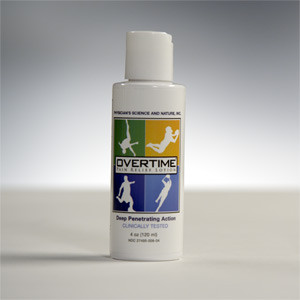Benjamin Franklin said, “There are no gains, without pains.” This phrase has been around for centuries, mostly referring to the relationship that you can only get results if there is undue exertion or pain put into the effort. While some certainly believe this to be true, especially athletes and those seeking physical fitness, for others it’s difficult to see the gain when dealing with daily pain.
But what kind of pains are there and how can you manage it?
There are actually several ways in which pain can be classified. One classification that is used depends on where the discomfort is felt in the body.
- Neuropathic pain: Typically caused by disease or injury to the nervous system. Sensations include tingling, burning, and sometimes an electric sensation. The underlying cause must be treated and ongoing management to keep the pain away.
Examples of neuropathic pain can include sciatica, shingles, herniated disc, carpal tunnel syndrome, or the result of cancer or diabetes.
- Visceral pain: This pain type is a deep, cramp-like feeling usually resulting when our internal organs are damaged or contracting. It is often a vague or dull feeling, not always easily localized.
Examples of visceral pain include problems with internal organs such as kidney, urinary bladder, or gallbladder. It can also result from menstrual cramps, inflammation, or constipation.
- Somatic pain: Considered one of the most common types of pain, somatic is pain that can be felt in the muscles, tendons, skin, ligaments, joints, and bones. It is often described as aching, sore, or like a knife.
Examples of somatic pain can include arthritis, tendonitis, most headaches, neck and back pain.
- Myofascial pain: This pain, from achy and tender muscles, is the most common type of pain. It has many triggers, from injury or illness to stress or depression. It can be quite an intense pain that can last a long time, resulting from tense and sore muscles and not necessarily injury.
Examples of myofascial pain include neck, shoulder, and low back pain, and tension headaches.
In addition to these four general pain categories, pain can be separated as acute or chronic:
- Acute pain is sudden and usually sharp, serving as a warning to the body, and can last a short time or over weeks or months.
- Chronic pain persists for a considerable time, from weeks to years, and can greatly affect attitude and lifestyle.
In addition, there is an almost endless list of specific painful conditions that can exist, most of which are examples of chronic pain. From back pain to headaches, joint pain to scoliosis, it’s important to understand the condition you are dealing with in order to manage the painful side effects.
Developing a treatment plan for chronic pain
How can you best move forward so that, if you have to deal with chronic pain for yourself or someone you care about, you can work to eliminate the anxiety in trying to manage it? There are three ways, in general, you can consider in developing the right plan to deal with chronic pain:
- See your Doctor.
Before you consider the pain treatment plan that is right for you, it’s important to understand the underlying source to your pain. Meeting with your doctor to identify the issue, and learn about options available to you, is critical to develop the right plan.
As we’ve learned, some pain is caused by injury or disease, which must be treated. But many pain episodes are chronic in nature and result from more general discomfort that requires longer-term remedies and approaches for relief.
- Consider your options.
A wide range of prescribed medications exist that can tackle pain. However, many of these can bring forward side effects or other serious issues that may make them less attractive or, at least, may make you want to minimize the use of prescriptions.
Explore physical therapy and exercise options that can help with the management of chronic pain. But also consider pain relief lotions and creams that are proven to help minimize the painful feelings and sensations, on a daily basis, as supplements to how you will cope with chronic pain.
- Explore your emotions.
Dealing with chronic pain, or helping someone you care about cope with chronic discomfort, can be taxing for everyone involved. When pain becomes a dominant aspect in your day, it’s time to re-examine your plan and consider ways to cope with the physical and emotional side of chronic pain.
Consider relaxation techniques, meditation, exercise, and massage as components to add into your plan to help counteract the effects of pain on your mood.
As a chronic pain sufferer in a “no pain, no gain” world, it may be time to consider how exactly you’ll cope to minimize the pain and ensure you’re gaining as much from life as possible.


